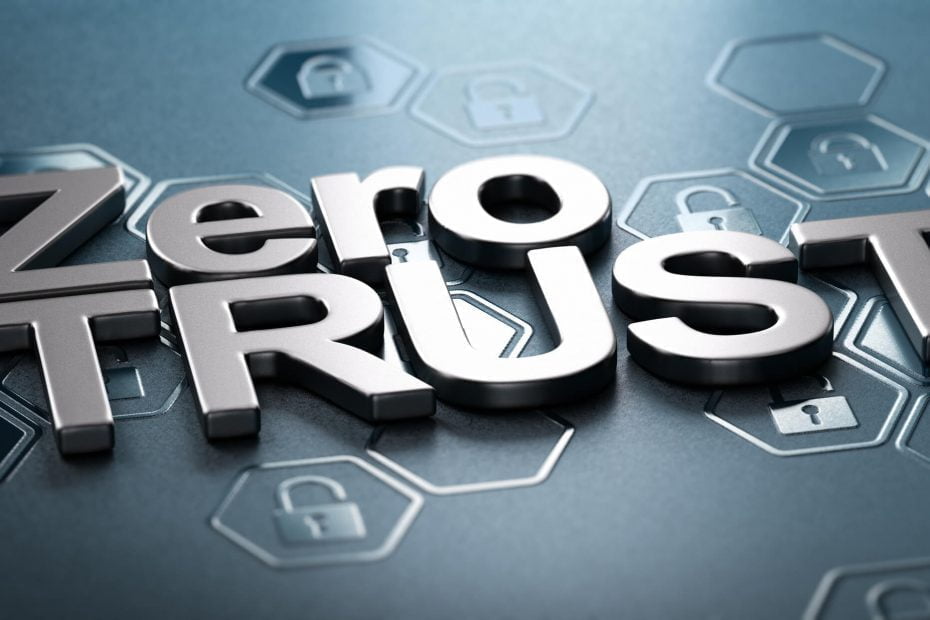What Is Zero-Trust Approach
Zero trust has proven to be ideal for enterprise-wide security since business operations now encompass cross-functional teams spread over a large geographic region. Therefore, enterprises have to give due regard to protecting data, applications and IT assets spread far and wide. Zero-trust security provides the means for fulfilling such stringent requirements.
Zero trust does not assume that everything behind the corporate firewall is safe. In fact, it always confirms instead of trusting. Although such a strategy is challenging to implement, it is highly expedient and has proven its worth in bringing down the unauthorized access.
But why does zero-trust work so well? Because it ends the notion of blindly trusting anything within the network. It assumes that nothing is safe unless proven. Hence, this approach leads to the highest level of security and caution. “Never trust, always verify” is the motto of the zero-trust approach.
Unlock the future of intelligent applications with our cutting-edge Generative AI integration services!
Zero-Trust vs. Traditional Model
Zero-Trust has become an IT security buzzword today. But its roots go back to 2010 when John Kindervag, a Forrester researcher, proposed this methodology.
Under this revolutionary approach, the underlying assumption is that network security is compromised, and hence nothing is to be trusted. Hence, each request is to be treated as if it comes from an insecure and open network.
This makes zero-trust vastly different from traditional IT security. Kindervag was shrewd enough to understand that placing trust inside the network carries major risks and is often wrong.
Hence, the trust itself is treated as a key vulnerability under zero-trust.
Under the older flawed model, once malicious actors gain access, they are free to move anywhere within the network since they have gained trust. Bad actors can then copy data or compromise its integrity.
The zero-trust approach deploys several feasible and proven tactics for minimizing the fallout of network breaches and hacks to prevent this happening. These include multi-factor authentication, end-to-end encryption and network segmentation. With these tactics in force, hackers cannot breach the rest of the network even after compromising a part of it.
NIST
NIST states that the zero-trust model endeavors to make access control highly granular.
But there is also the possibility of reducing the effectiveness of a network through such stringent security. The zero-trust model mitigates this possibility through seamless authentication and by allowing access only to authorized users. Access rules are highly granular and provide minimum privilege to mitigate the fallout from data breaches.
Here are the key tenets of zero-trust security under NIST SP 800-207.
1. All computing services and data sources are to be treated as resources wherever they emanate.
2. Network location is not synonymous with trust. Even if it is from inside the network, any request must first be authenticated before being permitted access. All communications must be fully encrypted, authorized, and authenticated.
3. A dynamic policy is implemented for providing authorized access to resources. It will depend on machine, service, user, and session details.
4. Enterprises must track and quantify all IT assets’ security and integrity, including 3rd party assets.
Zero Centric Architecture
There are two rudimentary approaches towards the zero-trust model – network-centric and identity-centric.
Although there are differences in technique, both methods implement the basic zero-trust approach via separate means.
A balanced zero-trust model includes elements from both of these approaches.
Enhanced Identity Governance
Under the enhanced identity governance, the identity of services, devices, and users is the crux of the policy. Such an approach must give due regard to the machine as well as human identity.
Besides humans, machine identity must identify themselves positively to gain authentication when connecting with other resources. To this end, they employ digital certificates and cryptographic keys.
Human Identity – authorized persons on the network, will require other types of multi-factor authorization besides passwords and usernames for positive identification.
Access policies for enterprise resources rely on identity as well as assigned attributes. Access privileges are assigned to machines, services, and users, which form the basis of access authorization to enterprise resources.
The policy may include certain other factors like environmental factors, asset status, and devices employed for more flexible authentication.
Enhanced identity governance is well-suited for enterprises running on the open network model. Such governance is also suitable for enterprises that rely on cloud-based services, applications, and assets.
Network Micro-Segmentation
Enterprises may also elect to orchestrate the zero-trust model that works with gateway security components and network micro-segmentation. This will require the use of software-defined network components, next-generation firewalls, and intelligent routers.
But such an approach will need identity governance to function effectively since the entity will have to authenticate machines, services, and users before granting authorized access. Since such a network has increased complexity, designing such a network might be more intensive and time-consuming.
Identity is the key to zero trust, no matter which technique is adopted for this model. Access management is central within the zero-trust approach. Authorization and authentication can help to verify that machines, services, and users claiming really are who they claim to be.
Zero Trust in the Present and Future
Emerging technologies, work from home model, and other digital transformations have increased network and IT security challenges.
It would not be an exaggeration to assert that the traditional security model is inadequate for the present milieu. Not only is the traditional model insufficient for security, but it will also hinder user experience, scalability, and productivity.
Employees are increasingly using personal devices to access corporate resources. These devices may not have the same level of security as the corporate network. These devices also increase the access points that can be manipulated for attacking the network.
Hence, the zero-trust model is the need of the hour. It mitigates all such threats while facilitating productivity, collaboration, and scalability.
The zero-trust approach can bolster security while enhancing user experience.
Further information about zero trust.




